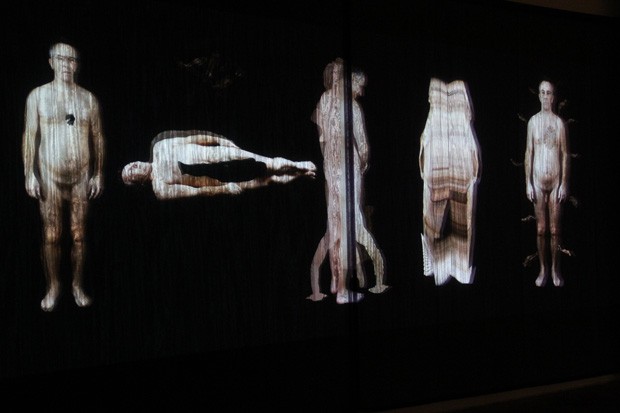News release
The art of the heart transplant
Montreal, January 28, 2014 — Few organs are as charged with meaning as the human heart – and yet, the organ is replaceable. Since the first heart transplant in 1967, the technical aspects of the operation have been streamlined, and heart transplantation is now the accepted therapy for end-stage heart failure.
These days, patients consistently come through heart transplants to live long, healthy lives. But until recently, little inquiry has been made into the emotional or psychological states of the recipient post-surgery. A new research collaboration between Concordia University researcher Ingrid Bachmann and a Toronto-based medical research group is helping to change that.
Hybrid Bodies: An Artistic Investigation into the Experience of Heart Transplantation is an evolving multi-sensory project that provides a creative context in which to discuss and explore organ recipients’ experiences and cultural views about transplantation, linking them to ideas of embodiment, identity and kinship.
“In Hybrid Bodies we looked at how the arts can be used to give voice to heart transplant recipients' experiences and incorporate these experiences into public discourse,” explains Bachmann, who is an associate professor of fibres and material practices in Concordia’s Department of Studio Arts. “Like with the discourse surrounding phantom limb pain, once we put a name to patient experiences, we'll be better able to discuss them.”
For the project, Bachmann collaborated with the Process of Incorporating a Transplanted Heart group (PITH), based out of the University of Toronto. Along with an international team of artists — Alexa Wright (University of Westminster), Catherine Richards (University of Ottawa) and Andrew Carnie (Southampton University) — she reviewed PITH video of interviews with post-operation heart transplant patients.
With the immediate objective of increasing overall public awareness of the complexities of organ transplantation and the ultimate goal of improving patient care, the artists created work to represent the effects of the surgery they identified in the patients' behaviour.
When Bachmann first saw the footage, she was struck by small differences between a patient’s words and actions. “The patients may have said one thing about how they were feeling, but their actions told a different story. Transplant survivors live with paradoxes: ill heart/new heart, donor/recipient," she says.
Bachmann stresses that the research conducted in Hybrid Bodies is neither art therapy nor medical illustration. “My colleagues and I are working to help bring amazing medical research to a larger public and to broaden the discussion around transplantation.”
The results of the Hybrid Bodies project, which was funded in part by the Social Sciences Humanities Research Council of Canada, are on display in a public exhibition at Montreal's Phi Centre from through March 15, 2014.
Source
© Concordia University


 A Change of Heart - from artist Andrew Carnie
A Change of Heart - from artist Andrew Carnie